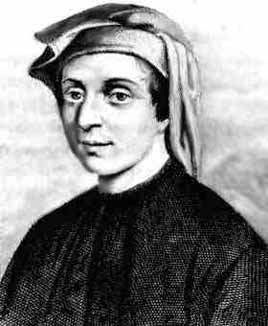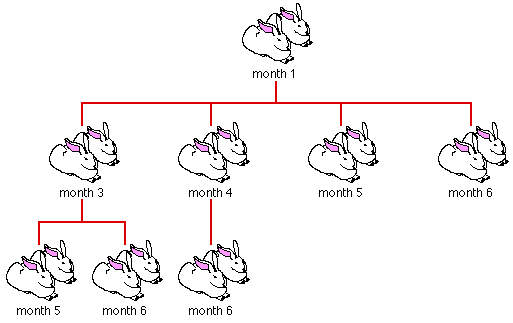FIBONACCI
|
Fibonacci (Figure 1) is the name whereby the mathematician Leonardo of Pizza (1170-1250)
is commonly known today. In his youth Leonardo was called Filus Bonacci ("son
of (Guilielmo) Bonacci"), the name stuck although over the years it has evolved
to Fibonacci. He traveled widely, met with scholars through out the
Mediterranean area, and produced four very significant works of arithmetic and
geometry. One of his discoveries
is the sequence of numbers that bears his name --- the Fibonacci sequence.
This resulted when, in the early 13th century, Fibonacci posed the following
problem:
|

Figure 1: Leanardo Pisano Fibonacci (1170-1250)
|
A man puts a pair of baby rabbits into an enclosed garden. Assuming each
pair of rabbits bears a new pair every month, which from the second month on
itself becomes productive, how many pairs of rabbits will there be in the garden
after one year.
Like most maths problems realistic happenings such death, escape, impotence,
Etc. are ignored. It is not hard to see that the number of pairs of rabbits each
month is given by the sequence:
0, 1, 1, 2, 3, 5, 8, 13, 21, 34, 55, 89, 144, 233, 377, ..
After the first two values , 0 and 1, each number of the Fibonacci sequence is obtained
from the sum of the preceding two numbers. This corresponds to the fact that
each month, the new rabbit births consists of one pair to each of the newly
adult pairs plus one pair for each of the earlier adult pairs. This is
illustrated in Figure 1.

Figure 1: Fibonacci's rabbits
It turns out that the Fibonacci sequence describes all sort of natural
phenomena such as: the
spiraling pattern on Nautilus shells, elephant tusks, sheep horns, birds claws;
the spiral arrangement of seeds on the face of certain sunflower; the pattern on
fir cones and
pine apples; and the branching patterns many plants and trees. The same number
also arises in computer science; for example in database structures, sorting techniques and
random number generation.
Some Fibonacci links:
Created and maintained by
Frans Coenen.
Last updated 12 June 2001

